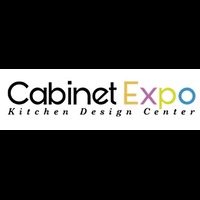Introduction
Open shelves have been a design staple for years—floating wood shelves in kitchens, glass shelves in bathrooms, or open bookcases for display. But as homeowners and designers eye more sustainable choices, better usability, and elevated aesthetics, the question is: Are open shelves still relevant in 2025? For those browsing cabinetry on CabinetExpo, the answer includes both opportunities and trade-offs. Let’s dive in.
The Rise and Evolution of Open Shelving
Originally popularized by farmhouse, minimalist, and industrial design trends, open shelving offered a way to make spaces feel more open and to highlight personal style. It was cost-effective, visually lighter than closed cabinetry, and provided display space for curated items.
Over time, people discovered drawbacks—dust, clutter, visibility of every item inside, and sometimes the false economy of sacrificing hidden storage. So the trend shifted toward balance: mixing closed and open shelving, using high-quality materials, and designing with maintenance in mind.
What Designers Are Saying in 2025
Design professionals in 2025 generally agree that open shelves have not gone away—but their implementation has changed. Key observations include:
-
Moderation is key: Instead of full walls of open shelving, designers suggest small sections, or using open shelves as accents.
-
Materials matter: Wood finishes, tempered glass, and metal accents (black, brass) are popular.
-
Lighting plays a big role: LED under-shelf lighting or integrated fixtures make open shelves look intentional rather than make-do.
-
Styling is increasingly functional: Display items that are used regularly, not purely decorative, to justify the upkeep.
Pros of Open Shelves for CabinetExpo Buyers
-
Aesthetic Appeal & Customization: Open shelves let you express personal style—display favorite dishware, pottery, cookbooks, or collectibles. CabinetExpo offers woods, stains, and styles that make this display pop.
-
Visual Lightness: When replacing upper cabinets, open shelves make small kitchens feel larger and brighter.
-
Easier Access: No doors to open, making it faster to grab commonly used items.
-
Cost Flexibility: Depending on the material and hardware, open shelving configurations can sometimes be more affordable than full cabinetry.
Cons & Drawbacks to Plan For
-
Dust, Grease, and Cleaning: Kitchens are messy places. Open shelving requires more frequent cleaning, and items on display must be neatly arranged.
-
Clutter & Style Over Function: If not styled carefully, open shelves risk looking chaotic. Function and organization are as important as design.
-
Limited Hidden Storage: You’ll sacrifice the ability to store less aesthetically pleasing items (e.g. food containers, appliances) out of sight.
-
Weight & Stability Concerns: Heavier items (crockery, pots) require strong shelf supports; poor installation can lead to sagging or safety issues.
Smart Ways to Incorporate Open Shelves (with CabinetExpo)
If you love the look of open shelves but want to avoid the downsides, here are tips tailored for CabinetExpo buyers:
-
Mix & Match: Pair closed cabinet units with open shelves—one wall or a portion of one wall can be open, keeping the rest for concealed storage.
-
Use Purposeful Styling: Display frequently used items and keep them in coordinated sets. Use baskets, matching dish sets, or color-coordinated containers to maintain cohesion.
-
Choose durable materials: Opt for woods or finishes with good sealing; glass shelves need strong brackets. CabinetExpo’s material quality matters here.
-
Install lighting: Integrated LED strips or puck lights can highlight shelf items and keep shelves from looking dusty or dim.
-
Prioritize structure & safety: Make sure shelves are properly anchored, use brackets or hidden steel supports where needed if weight will be high.
-
Consider doors/closed units nearby: For items you don’t want on display (spices in unattractive jars, food storage, cleaning items), keep closed cabinetry within reach.
Trends for 2025 in Open Shelving
-
Recessed or built-in niches: Shelving that’s built into the wall or backsplash for seamless integration.
-
Transparency & display: Glass shelves, or frames that let you mix open plus glass-front doors (so visibility without full exposure).
-
Mixed materials: Wood + metal, wood + glass, or combining different woods or finishes to create contrast.
-
Sustainability & artisan materials: Reclaimed woods, FSC-certified lumber, or local materials to reduce environmental impact.
-
Functional design: Open shelving designed with adjustable heights, or pull-out trays, so the shelf can adapt to use, not just appearance.
Should You Choose Open Shelves? Final Thoughts
For CabinetExpo customers, whether open shelves are right for you depends on priorities:
-
If style, showcasing items, and aesthetic appeal matter more, and maintenance doesn’t bother you, open shelves can add unique personality.
-
If you need storage, organization, and practical functionality—closed cabinets are safer.
-
A balanced, hybrid approach often wins: Open shelving where it adds design value, closed where it hides clutter.
Conclusion
In 2025, open shelves are not a relic—they’re simply evolving. For CabinetExpo shoppers, the key is to use them intentionally. Think about materials, installation, styling, and balance. When done well, open shelving enhances beauty, adds character, and elevates the space. When done poorly, it becomes cluttered and difficult to manage.
If you’d like help visualizing open shelf layouts, or to see finish/material options from CabinetExpo that work well in open or mixed shelving configurations, reach out—we’re here to guide you toward cabinetry that both looks great and works hard.



